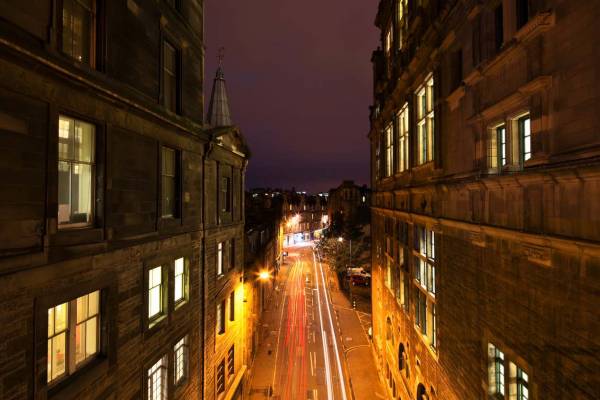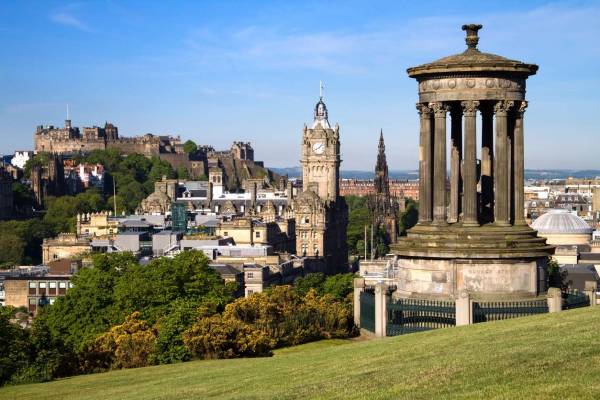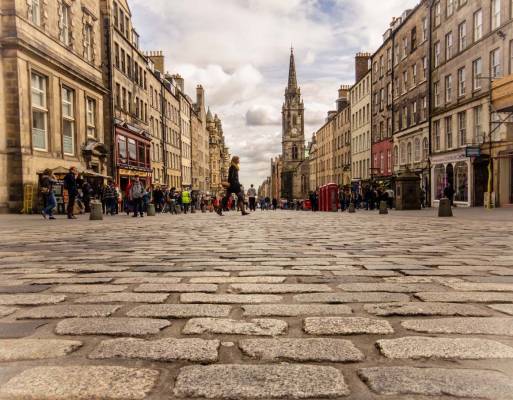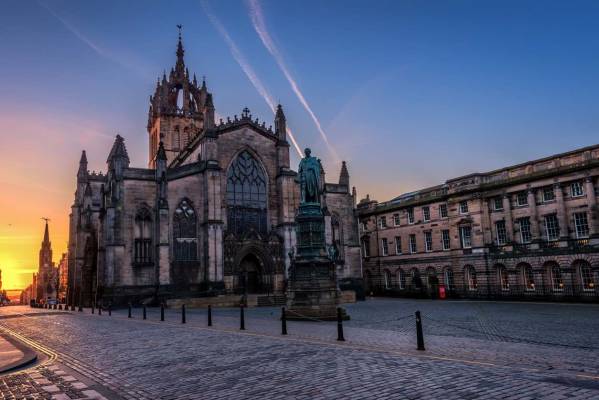
How did some of Edinburgh’s most famous landmarks get their name?
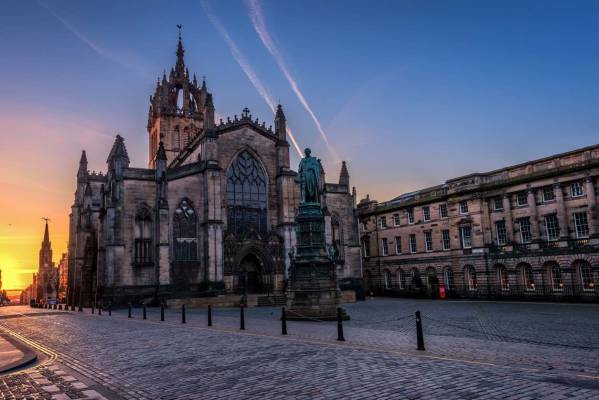
Shakespeare’s Juliet once said, “What is in a name?” Well, it turns out there can be quite a lot to a well-named landmark! Let’s take a closer look at how some of Edinburgh’s most iconic places acquired their names.
Edinburgh has no shortage of historical and cultural sites. From the iconic Edinburgh Castle in the centre of the Old Town to the Royal Yacht Britannia docked in the city’s outskirts, Edinburgh is full of fascinating places to discover. So it’s no surprise to learn that Scotland’s capital gains over £1 billion every year from tourism; people just can’t stay away!
But what are the stories behind some of Edinburgh’s most iconic landmarks? Was the Old College always referred to as ‘old’? Is the Royal Mile actually a mile long? And just who is Arthur, and how did he get a seat in such a good spot?
We’re going to take a look at some of these incredible locations from in and around Edinburgh and reveal the fascinating tales behind their names. Next time you visit them, take a moment to think about just how far the city has come.
St Giles’ Cathedral
Let’s start with St Giles’ Cathedral — arguably the most beautiful and impressive building along the famous Royal Mile. Sometimes referred to as the High Kirk of Edinburgh, the cathedral was founded in the 12th Century and remains to this day the principle place of worship for the Church of Scotland.
So who was St Giles? He’s actually the patron saint of Edinburgh, which is why the cathedral was named after him. He represents not only the city as a whole, but beggars, the disabled and the mentally ill, too. In fact, he’s such a prominent figure in Edinburgh’s culture that Princes Street was very nearly named Giles Street until King George III decided he didn’t like the negative connotations of what St Giles represented. He changed the name as an ode to his sons instead.
Calton Hill
Just outside the city centre you’ll find Calton Hill — a beautiful spot to sit and watch the Edinburgh sunset. When the land was granted to Edinburgh in 1456 by King James II, the hill was referred to as Craigingalt. The origins of this name aren’t verified, though it’s thought to come from an Old Welsh term meaning ‘the place of the groves’.
The Gaelic version of this name, ‘Calltuin’, was widely used among residents and went through many different Anglicised forms, including Cauldtoun, Caltoun, Coldtown, and finally Calton Hill in the 1700s. The name has stuck ever since.
The Royal Park
The royal park may also be known as Queen’s Park or King’s Park depending on the monarch, but the space actually borrows its title from a now-ruined abbey. Holyrood Abbey was built in 1128 and gets its name from the old Scots colloquialism for ‘Holy Cross’, as ‘ruid’ or ‘rood’. This is the specific cross used for Jesus’s crucifixion in The Bible.
So both Holyrood Park and the royal residence beside it get their name from an old abbey. Think of that next time you’re taking a stroll by the scenic pastures.
The Meadows
Surprisingly, the Meadows weren’t always meadows. Originally, the space was taken up by a huge body of water known as Burgh Loch, which acted as the city’s main supply of drinking water until 1621. It’s sister loch, Nor Loch, stood where West Princes Street Gardens now stands and helped residents dispose of their waste!
As piped drinking water came in, Sir Thomas Hope began plans to transform Burgh Loch into a public park. The loch was drained and over centuries the Meadows became the grassy expanse we know and love today – not least because it’s the view offered to many of Quartermile’s residents.
The park was originally named Hope Park after its founder, but became known as the Meadows to reflect its amazing transformation.
Arthur’s Seat
There are a couple of reasons why Arthur’s Seat might be called Arthur’s Seat, one practical and one mythical. If you’re a fan of ancient legends, you might like the idea that Arthur’s Seat is named after none other than King Arthur himself. Some think the name refers to the spot where Arthur and his knights won legendary battles, whilst others think it could have even been the site of Camelot!
If you want a more logical explanation, however, you might be inclined to believe that there isn’t actually an ‘Arthur’ at all. Historian William Maitland put forward the theory that the name comes from the Scots Gallic term ‘Àrd-na-Said’, meaning ‘height of arrows’.
Why don’t you choose your favourite explanation on that one?
The Royal Mile
Running from Edinburgh Castle all the way down to Holyrood Palace — and with plenty of fascinating sites in between — the Royal Mile is arguably Scotland’s most famous street. It still forms the main thoroughfare of Edinburgh’s Old Town.
As the name suggests, the Royal Mile is indeed one Scots mile long (which is slightly longer than an English mile, as mentioned by Robert Burns in his poem ‘Tam o’ Shanter’). The name was first used in W M Gilbert’s 1901 book Edinburgh in the Nineteenth Century.
Old College
Old College hasn’t spent its whole life being referred to as old. In fact, when it was first built in 1789 by Robert Adam it was known as New College. This is due to it replacing a collection of existing buildings.
However, in 1846 when the new New College was built on the Mound, the old New College became the new Old College. Still with us?
Cowgate
Also known as ‘Free Town’, Cowgate is another famous street in Edinburgh’s Old Town. It lies south of Edinburgh Castle, meeting up with the Grassmarket and Holyrood Road at either end.
As is the case with many of the Old Town’s streets, Cowgate is named as such for very practical reasons. Back in medieval times, the street was used to herd cattle towards the market, as ‘gate’ was often used in Scottish dialect to mean ‘way’ or ‘road’. The name was officially recorded in 1428.
Grassmarket
Unsurprisingly, Grassmarket was once the spot on which Edinburgh’s famous market was held. The ‘grass’ part of the name refers to the grazing pens which were erected for the livestock which was on sale.
Although the market itself is no longer running, the square still retains its quirky charms, and there are plenty of hidden gems to be found.
Flodden Wall
Flodden Wall is the old wall which surrounded the town between the 16th and 18th century, originally built as a fortress in preparation for an inevitable English invasion.
The wall gets its name from the Battle of Flodden, fought in Northumberland in 1513. During the battle, the Scots were defeated and King James IV was killed. The Scots retreated home and built what we now know as Flodden Wall to protect themselves.
Quartermile
Having once been the site of the old Royal Infirmary of Edinburgh, Quartermile is now a spot near the centre of Edinburgh which boasts some of the city’s most beautiful properties. It overlooks the green Meadows and is in prime location for exploring all that Edinburgh has to offer.
If you’re in the market for a new luxury home, why not find one in your own special corner of this fantastic city? Contact Quartermile today to arrange a viewing by calling 0845 000 2525.


